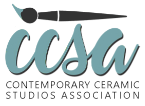Exploring the Art of Glass Fusing: A Beginner’s Guide
Have you ever heard of glass fusing? While the name may sound complex, this fascinating art form is surprisingly accessible—even for beginners! Many paint-your-own-pottery (PYOP) studios offer glass fusing classes alongside traditional pottery painting, as both techniques require the same type of kiln. Whether you're interested in learning basic techniques or creating unique, handcrafted glass art, this medium is a joy to explore.
How Does Glass Fusing Work?
Glass fusing involves layering pieces of glass onto a flat glass base and then heating them in a kiln until they fuse together. This process allows artists to create stunning, colorful designs with a variety of techniques and textures. The fused glass can go through the kiln multiple times to add elements, refine shapes, or change its structure.
Here are some common techniques used in glass fusing:
Draping – The glass is placed over a tall, thin metal post inside the kiln. As it heats, the glass slowly drapes around the post, creating beautiful, organic folds. This technique is often used for small decorative bowls, such as ring dishes.
Slumping – A technique similar to draping, but instead of a tall post, the glass is placed over a shallow mold to create a dish with gently curved edges. Slumping can also add texture to the surface or reshape bottles into sleek, flattened trays.
Layering & Cutting – Artists can cut and layer different pieces of glass to create patterns, images, or abstract designs before firing them in the kiln.
What Can You Make with Glass Fusing?
Glass fusing opens up endless creative possibilities! Some of the most popular glass fusing projects include:
Sun Catchers – Colorful, translucent designs that catch and reflect light beautifully.
Jewelry & Pendants – Small, fused glass pieces that can be turned into unique necklaces or earrings.
Lantern Panels – Custom glass designs fitted into metal lantern frames for a stunning, glowing effect.
Decorative Bowls & Dishes – Functional art pieces created using slumping or draping techniques.
Tools & Materials Used in Glass Fusing
A glass fusing class will introduce you to a variety of tools and materials, including:
Scrap Glass – Small, colorful pieces used to design patterns and images.
Marbles – Added for rounded, decorative elements.
Frit – A sand-like glass material that allows for layering colors and creating different opacities.
Kiln Paper – Prevents the glass from sticking to the kiln shelf during firing.
Glass Cutters – Used to shape and refine glass pieces before assembling a design.
Find a Studio Near You
If you're intrigued by glass fusing and want to give it a try, check out your local PYOP studio to see if they offer glass fusing classes or workshops! Many studios provide beginner-friendly sessions with step-by-step guidance, so you can learn at your own pace. Use our studio locator to find a glass fusing studio near you and start crafting your own stunning glass art today!
